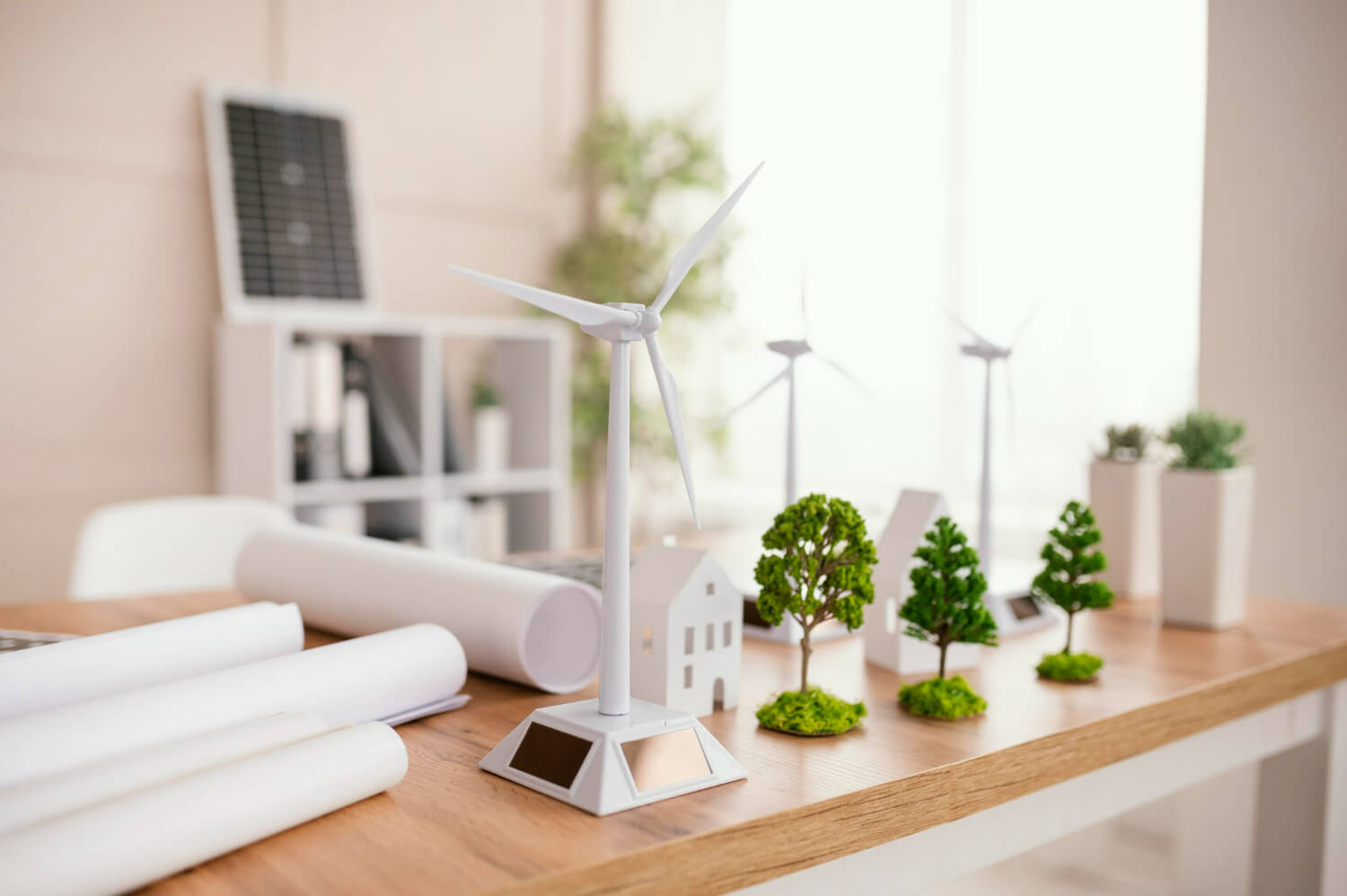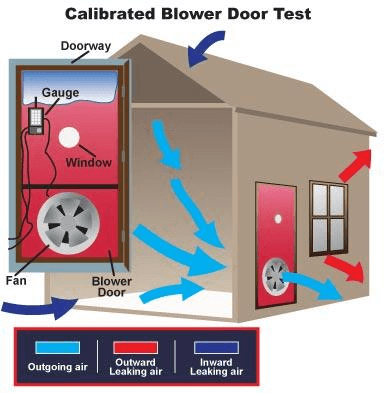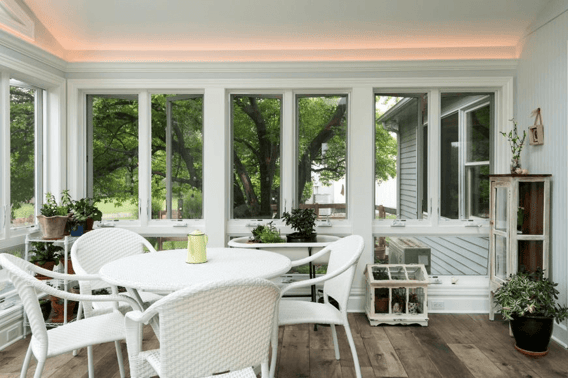5 Steps for Improving Your Home’s Energy Efficiencies in 2026
February 1st, 2023
5 min read

If you're like many homeowners, you may be tired of sky-high energy bills and concerned about the environmental impact of your household's energy consumption.
If you’re planning on remodeling your home, you can take the opportunity to make it more energy-efficient to both reduce your impact on the environment and lower your monthly energy costs.
There are several straightforward steps you can take to make your home more energy efficient, and we're here to help. Our team of home remodeling experts has 20+ years of experience in helping our clients not only make their homes beautiful but also more efficient.
In this article, you’ll learn five steps you can take to remodel your home for greater energy efficiency:
- Conduct an Energy Audit
- Seal Your Home
- Replace Windows and Doors
- Select Energy-Star Appliances
- Upgrade Furnace and Water Heater
You'll be able to lower your energy bills, reduce your environmental impact, and enjoy a more comfortable home.
(The information in this article was updated on December 29th, 2025.)
1. Conduct an Energy Audit
Performing an energy audit is the crucial first step in identifying opportunities to make your home more energy efficient. The goal is to identify areas where your home is losing energy and to provide recommendations for improving energy efficiency.
An energy audit involves a thorough evaluation of your home's energy usage, including an inspection of gaps in your home's insulation, windows, and doors. Typically, finding and insulating gaps in your home’s exterior will quickly and dramatically improve your efficiency.
While you can do an assessment of your home’s energy efficiency on your own, it’s recommended that you hire a professional. They will provide the most accurate results and the best next steps to improve your efficiency.
One method used by professionals to determine efficiency during an energy audit is called the blower door test. A blower door test draws in outside air through any gaps in the insulation of your external walls, which are identified with a thermal camera.

You will be surprised by how many gaps there are in your external walls. Once the blower door test is complete, you’ll know how much of a “hole” needs to be sealed.
2. Seal Your Home
Results from the energy audit will show exactly where your home needs additional insulation and sealant.
Typical problem areas from an energy audit include basement rim joists, the attic, and gaps around windows.
Adding insulation and air sealant to these areas as part of a home remodel will not only make your home more energy efficient but also more comfortable.
Basement Rim Joists
Basement rim joists are where the floor framing of the house meets the foundation wall. These are important areas to insulate, as they are prone to air leakage and can contribute to heat loss in the winter and heat gain in the summer.
To properly insulate your basement rim joist areas, materials such as spray foams or caulking are commonly used. Which material you choose for your project will depend on your insulation needs and budget.
Attic
To prevent rising heat from escaping, insulating your attic space is an important step in improving the energy efficiency of your home. An improperly insulated attic can drastically reduce your home’s energy efficiency and make your home less comfortable to live in, especially in the winter.
By adding insulation to your attic, you can reduce heat loss and gain, helping to keep your home more comfortable and energy efficient throughout the year.

With your budget in mind, you can choose from common insulating materials for your attic, including fiberglass rolls, loose-fill (cellulose) insulation, and spray foam.
Gaps Around Windows
Insulating gaps around windows is an important step in improving the energy efficiency of your home. Gaps around windows can allow for heat loss in the winter and heat gain in the summer, leading to higher energy bills and discomfort in your home.
To insulate gaps around your windows, use caulking, spray foams, and weather-stripping that are fine enough to fit in the small gaps but strong enough to prevent air movement.
Proper insulation and sealing are key for improving the energy efficiency of your home. By choosing the right type of insulation for your home and properly installing it in key areas, you can reduce heat loss and gain, lower your energy bills, and create a more comfortable living environment.
Whether you're looking to save money on your energy bills, reduce your environmental impact, or simply create a more comfortable home, insulation is an effective and cost-friendly solution.
3. Replace Windows and Doors
Upgrading to new, energy-efficient windows and doors is another way to positively improve the energy efficiency of your home. Drafty, old windows and doors can allow for significant heat loss in the winter and heat gain in the summer, leading to higher energy bills and discomfort.

Paired with a remodel, you’ll be able to completely update the appearance of your home with new windows and doors.
Windows and doors are available in a wide range of materials, colors, features, and styles to suit the design needs of your home remodel.
4. Select Energy-Star Appliances
Energy Star appliances are required to meet strict energy efficiency standards set by the U.S. Environmental Protection Agency (EPA). These appliances are designed to require much less energy to run than their counterparts.
If your home remodel requires new appliances, such as for your kitchen, selecting Energy Star options will give your home both the style and energy efficiency you’re looking for.
By choosing Energy Star appliances, you can enjoy the convenience and performance of modern appliances while also reducing your energy consumption and carbon footprint.
5. Upgrade Furnace and Water Heater
Upgrading your home's furnace and water heater is an effective step to make your home more efficient and save money on your energy bills.
Furnace
According to the US Department of Energy, approximately 43% of your home’s utility bill comes from heating and cooling. Combining an upgraded high-efficiency furnace with proper insulation and air sealant, you can reduce your monthly heating and cooling costs by 20% - 50%.
A professional HVAC technician can advise you on the correct furnace for your home based on some key factors, which include:
- The size of your home
- Your home’s heating and cooling needs
- The type of fuel for your home’s current furnace
It’s important to get an expert recommendation so you can rest assured knowing that the furnace you install can adequately and safely meet your needs.
Water Heater
Upgrading your water heater is an effective way to improve the energy efficiency of your home and save money on your energy bills.
A popular option to increase your home’s energy efficiency is a tankless water heater.
These water heaters, also known as demand-type or instantaneous water heaters, provide hot water on demand, without the need for a storage tank. As a result, you can save significant energy and money on your hot water bills.
Overall, upgrading your home's furnace and water heater is an investment that can pay off in the long run by reducing your energy consumption and improving your home's comfort and convenience.
Next Steps for Improving Your Home’s Energy Efficiency
With energy costs as high as they are, everyone wants to find ways to reduce their monthly utility bills. By remodeling your home for energy efficiency according to these five steps, you can expect to see significant energy savings, as well as reduce the environmental impact of your household.
As home remodeling experts with years of experience, our team knows how to effectively remodel your home and make it more energy efficient.
If you are interested in remodeling your home to make it more energy efficient, book a consultation with one of our project development advisors.
To learn more about other aspects of home remodeling, you may be interested in reading the following articles:
-
Top 3 Remodeling Options for Homeowners - An overview of the three most popular remodeling paths homeowners take, helping you choose the option that best fits your goals, timeline, and budget.
-
How to Compare Home Remodeling Contractor Quotes - A practical guide to comparing remodeling quotes so you can understand scope, pricing differences, and what truly delivers long-term value.
-
6 Best Home Remodeling Contractors in Lansing, Michigan - A curated look at five reputable remodeling contractors in the Lansing area, highlighting what homeowners should consider when choosing the right partner.
Michael brings over 2 decades of building and remodeling experience to his position as the Owner and Visionary of Custom Built. Michael’s passion to make an impact on the home building industry has led him to serve for over ten years at the local and state Home Builders Association, culminating as President of the HBA of Michigan in 2020.
Topics:


























